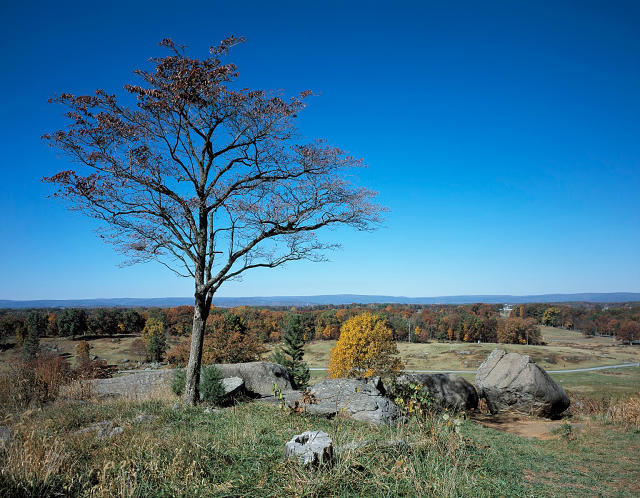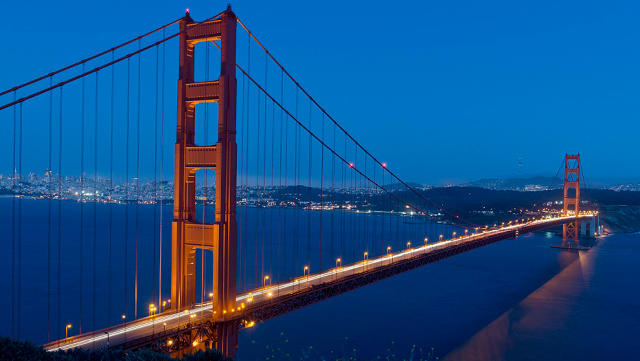The Billion-Dollar Copyright Lawsuit That Could Legalize A New Kind Of Scam
Could a copyright lawsuit involving a renowned photographer of American iconography enable a new kind of scam in which ne’er-do-wells send out threatening letters demanding licensing fees for public-domain works—and that those actions are both legal and unstoppable? It could, in the form of an unintentional side effect that has cropped up at the edges of copyright law.
The case involves photographer Carol Highsmith, whose work you’d recognize even if you’ve never heard the name. Sometimes called “America’s photographer,” she’s taken iconic photos of scenes from the White House to the saguaros in the Sonoran Desert to oversized roadside attractions. She was surprised to receive a letter in December 2015 from a company called License Compliance Services on behalf of the photo-licensing agency Alamy demanding that she pay a licensing fee for the use, on her foundation’s website, of one of her own works.
The surprise was twofold: Not just that it was her photograph, but also that, since she’d turned over her photographs for free use by the public years before, to her mind, nobody could charge for them, much less insist on a license. Highsmith had dedicated her work to the public starting in 1988, which was formalized through an agreement signed in 1991 with the Library of Congress (LOC). In the intervening years, she has supplemented the initial offer with additional gifts.
Her shock wore off after she spoke with a representative of the firm attempting to collect payment—and it turned into ire. So she called her attorneys and filed suit on July 25 of this year, demanding statutory copyright damages from several companies that list her work for resale or issue demand letters for rights payments. This includes a claim against Getty Images that could go well over a billion dollars, since the agency offers 18,755 of her photos for licensing. Highsmith’s suit seeks substantial but far lower sums against Alamy and the licensing contractors. (An amended filing from August 17 throws in more: Allegations of “false advertising and unfair competition” under federal and New York state law, which involve additional potential damages, though not on the scale of the alleged copyright violations.)
But can Highsmith sue for copyright damages if she donated her work to the LOC? The suit largely hinges on the ineffability of the public domain.
And should Highsmith be unable to sue effectively, it might open the door to much broader, more illicit attempts to demand fees—not by Getty Images and other legitimate stock-photo firms, but by those who know they have no right to collect them.

Can You Control What You Said You Don’t Own?
In her 1991 LOC agreement, Highsmith wrote: “I hereby dedicate to the public all rights, including copyrights throughout the world, that I possess in this collection.”
Jennifer Jenkins, the director of the Center for the Study of the Public Domain at the Duke University School of Law, says that there’s no specific statutory language that lets a copyright holder define something as free of copyright. The general convention, she says, is that there has to be “an intent to abandon copyright and an overt act of intent to abandon copyright.” Jenkins says that the initial portion of Highsmith’s contract clearly encompass both.
If so, it’s impossible for her to prove infringement, because “there can only be infringement if there’s copyright,” Jenkins notes. The Library of Congress even notes on a rights and restrictions page for the Highsmith collection that “Carol M. Highsmith’s photographs are in the public domain,” which would back that interpretation.
“It sounds to me like she successfully dedicated her copyright to the public, in which case she has nothing left as leverage,” says Robert Brauneis, a copyright and constitutional expert and professor at George Washington University Law School, whose 2010 research into the ownership of “Happy Birthday to You” contributed significantly to that song finally being deemed effectively in the public domain. (Brauneis is currently consulting on suits filed by the “Happy Birthday” plaintiffs’ attorneys to have two other classic songs declared free of copyright.)
In a motion to dismiss filed September 6, Getty Images noted, “Plaintiffs’ four claims against Getty Images . . . are all an attempt to regain some measure of legal protection for the Highsmith Photos that Plaintiff Highsmith relinquished years ago.” (When asked to comment, Highsmith referred Fast Company to her attorney, who didn’t respond to questions about the suit. Getty declined to comment due to active litigation.)
Jenkins says, “It seems like Getty did something wrong. They took photos that are not theirs and put their watermark on them and charged people for them . . . [but] it’s not illegal to charge people for public domain works.” Getty cited a number of examples, including public-domain books sold on Amazon.com.
However, the public domain is a slippery place. It’s more readily defined by an absence: work that no longer has copyright protection. Work that has fallen into the public domain includes all published items in the U.S. up to 1922, and an increasingly smaller amount of work over the next 64 years. Almost nothing since has entered the public domain without intent. Everything else requires research.
The U.S. Copyright Office, a division of the LOC, won’t provide any guidance to those asking whether a given book, photograph, movie, or other work remains under copyright, be it donated or lapsed. It doesn’t register donated works, either, so there’s no central registry for work like Highsmith’s. The Library of Congress specifically declined to comment about Highsmith’s copyright, citing pending litigation.
It might seem that this situation is crystal clear, since Highsmith signed an agreement that she appended to her lawsuit. But after the seemingly unambiguous statement that she signed in 1991 to donate rights to her photos, things get murky in that document. Jenkins notes that the public domain dedication “could plausibly be contradicted by other parts of instrument of gift that placed restrictions that indicate she still is retaining other rights.”
And that’s what Highsmith’s amended lawsuit argues: She never intended to abandon her copyright at all, because following the dedication noted in her 1991 contract, she also required attribution:
The Library will request, through its standard procedures, that when material in the Archive is reproduced by those who have obtained reproductions credit be given as follows: The Library of Congress, Carol M. Highsmith Archive.
Highsmith added in her amended suit in August that she didn’t have the benefit of counsel while writing her 1991 agreement, implying that it’s not legally precise enough to constitute a dedication. Jenkin says, “There’s going to be a lot of room for interesting arguments.”

I Have A Picture Of A Bridge To Sell You
Assuming that the judge in the case doesn’t agree with Getty Images that the Highsmith suit should be dismissed, the court will ostensibly decide whether she retains any rights before this even reaches a jury stage. If so, the case proceeds in a fairly straightforward way. For the billion-dollar-and-change alleged misuse of copyright that Highsmith levies, she has to prove that the photo agencies not only falsified the copyright notice for her images (by labeling some of them as oddly as “Photo by Carol M. Highsmith/Buyenlarge/Getty Images” or omitting her name altogether), but also that they did so with the intent to infringe on her rights, rather than by lack of attention to detail. In the other non-copyright allegations that have lower damages attached, there’s less need to prove intent.
But here’s where things once again get tricky. A court decision could spawn a new email and snail-mail scam that would be tacitly legal and impossible to fight.
If a court finds Highsmith did dedicate the work into the public domain and that because she has no ownership of the work, she has no grounds to pursue action for “false advertising and unfair competition,” “deceptive acts or practices,” and so on, as alleged in the suit, then anyone can send out demand letters for licensing fees for any public-domain work without any basis in reality. For instance, a publishing house could receive a licensing-fee demand for printing an edition of Shakespeare’s Macbeth or, more insidiously plausible, one of the 46 Sherlock Holmes short stories that have lapsed into the public domain in the United States.
Someone receiving such a letter would have no way to know whether or not it could be safely ignored. And if the recipient researched the copyright and hired an attorney, there might be no way to have a lawsuit heard, should the Highsmith case set a precedent.
Brauneis says that if a court finds copyright law is paramount, and that without a violation under a section of the Copyright Act, “there’s no other cause of action that can be brought, that essentially declares anybody can go into the business of selling the Brooklyn Bridge to people.”
A victim of such seeming fraud would have no recourse because without an owner to pursue action under copyright law, there wouldn’t be any other basis. Brauneis finds this potential “morally abhorrent,” but sees it as an unfortunate possible outcome. He notes, “All those emails that come from Nigeria about cash someone had discovered, would all be about: You need to license from me.”
This case received a lot of attention at its initial filing because of Highsmith’s reputation and her stirring photos of U.S. symbols. Both Jenkins and Brauneis agree that it’s not the cold legal facts that have provoked so much public discussion and outrage. “It makes a case emotionally,” Jenkins says. Furthering that idea, Brauneis notes, “It generates sympathy to say, ‘I was trying to give this to the public, and you greedy people reprofitized.'”
Highsmith certainly didn’t intend this potential outcome, and a savvy judge should be able to avoid creating a path for enabling scams. But it reveals the amorphous borders of the public domain: An inexhaustible commons that could have fraudulent toll booths erected all around it.
related video: From Apple To Zara, Designers Like To Steal. So What?
Fast Company , Read Full Story
(13)


